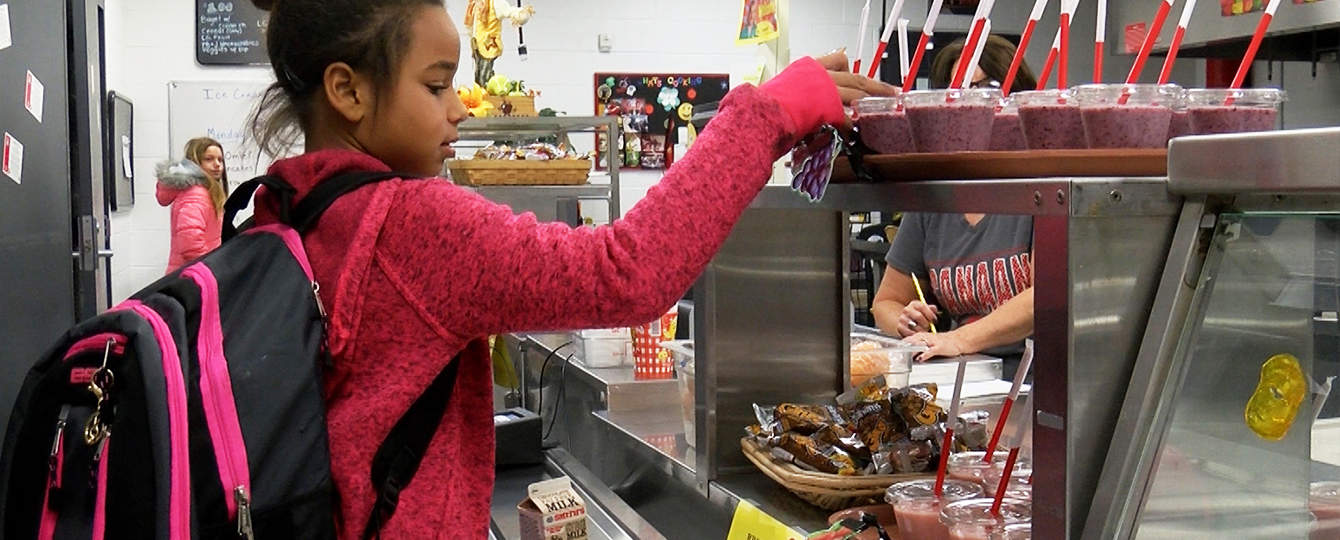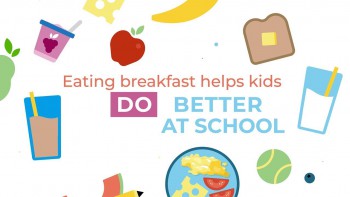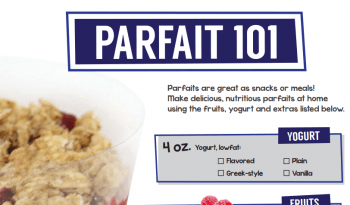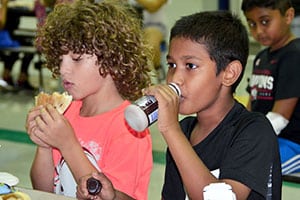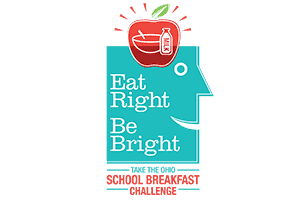Breakfast is the most important meal of the day. Research shows that students who eat breakfast have higher test scores, improved daily attendance and better class participation, and students who attend school more regularly are more likely to graduate from high school.
According to the Dietary Guidelines for Americans, many kids (and adults) lack calcium, vitamin D and potassium in their diets. Eating a nutritious breakfast that includes dairy helps kids meet daily nutrient needs and perform better in school.
School breakfast is a convenient and nutritious option for busy families or kids who don’t feel hungry as soon as they wake up. It’s available to all students regardless of socioeconomic background and has a great nutritional value!
Serving Solutions
Breakfast can be served at school in a variety of ways. Proven strategies to increase breakfast consumption include:
Breakfast in the Cafeteria
Breakfast is served and eaten in the cafeteria. A variety of hot and cold menu items can be offered so students get a healthy start to their day.
Breakfast in the Classroom
Students eat together in the classroom, and breakfast is delivered by the nutrition staff, students and/or volunteers.
Grab ‘n’ Go Breakfast
Students pick up breakfast when they arrive at school, and it is served in a variety of high-traffic areas such as the cafeteria, hall or entry ways.
Second Chance Breakfast
Students get breakfast during a break in the morning after first period or midway between breakfast and lunch, similar to Grab ‘n Go.
School breakfast programs are important and may positively impact children’s nutrition and learning. You can support the breakfast initiative by making breakfast a priority in your homes and school!
For school breakfast recipes, check out our smoothie, yogurt parfait and overnight oats school kits.
